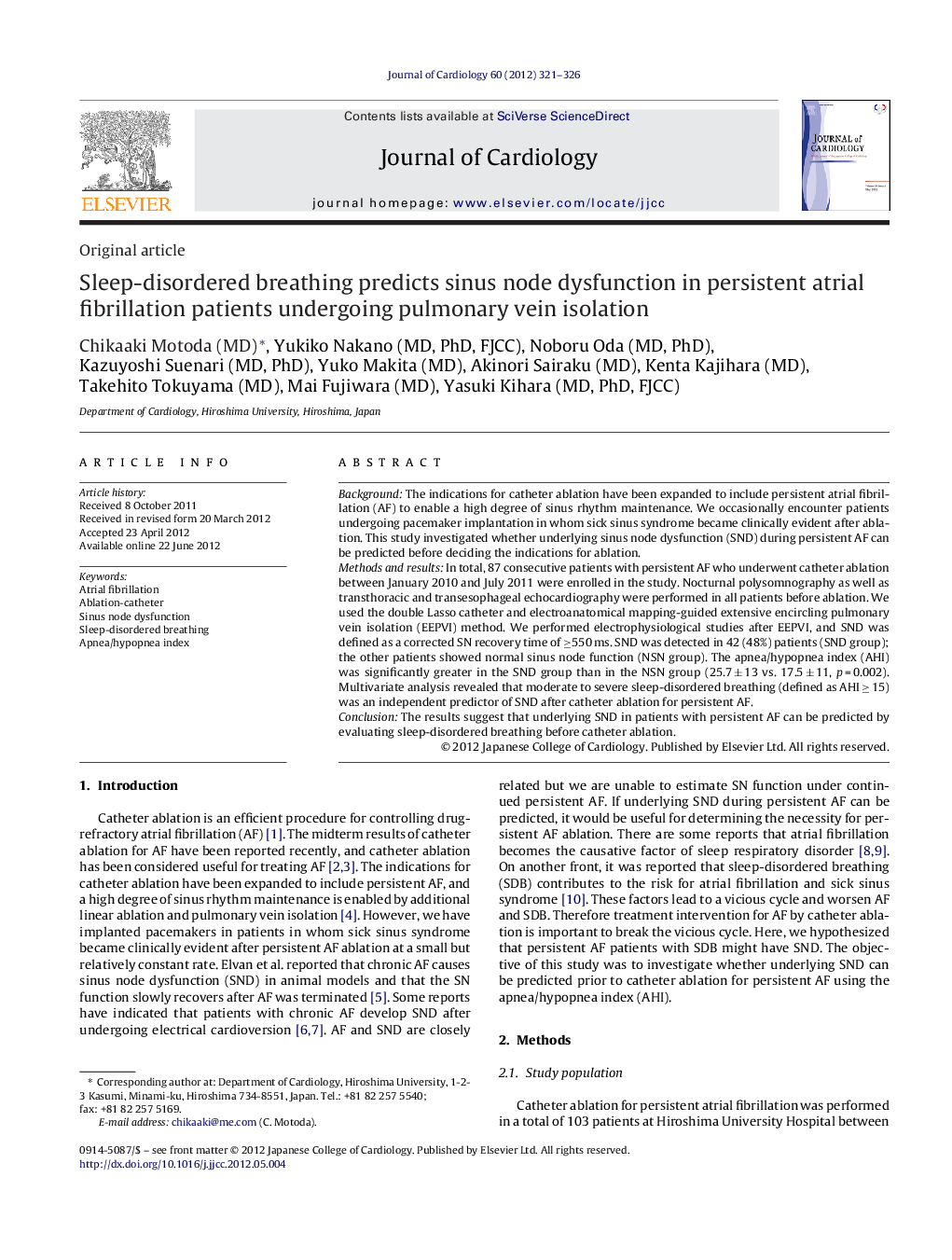| Article ID | Journal | Published Year | Pages | File Type |
|---|---|---|---|---|
| 2963155 | Journal of Cardiology | 2012 | 6 Pages |
BackgroundThe indications for catheter ablation have been expanded to include persistent atrial fibrillation (AF) to enable a high degree of sinus rhythm maintenance. We occasionally encounter patients undergoing pacemaker implantation in whom sick sinus syndrome became clinically evident after ablation. This study investigated whether underlying sinus node dysfunction (SND) during persistent AF can be predicted before deciding the indications for ablation.Methods and resultsIn total, 87 consecutive patients with persistent AF who underwent catheter ablation between January 2010 and July 2011 were enrolled in the study. Nocturnal polysomnography as well as transthoracic and transesophageal echocardiography were performed in all patients before ablation. We used the double Lasso catheter and electroanatomical mapping-guided extensive encircling pulmonary vein isolation (EEPVI) method. We performed electrophysiological studies after EEPVI, and SND was defined as a corrected SN recovery time of ≥550 ms. SND was detected in 42 (48%) patients (SND group); the other patients showed normal sinus node function (NSN group). The apnea/hypopnea index (AHI) was significantly greater in the SND group than in the NSN group (25.7 ± 13 vs. 17.5 ± 11, p = 0.002). Multivariate analysis revealed that moderate to severe sleep-disordered breathing (defined as AHI ≥ 15) was an independent predictor of SND after catheter ablation for persistent AF.ConclusionThe results suggest that underlying SND in patients with persistent AF can be predicted by evaluating sleep-disordered breathing before catheter ablation.
